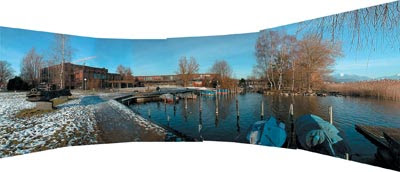We last left off in our discussion with Art as he was beginning to tell us more about the Through Each Other's Eyes organization and his experiences on this most recent trip to Mexico.
MI: How important is it to have the right translator and guide? Or did you get by with common sense and lots of smiles?
"Before my trips I purchased some CD's for language which taught me key phrases. I learned enough to get me in hot water pretty quick." he jokes. "The native people are very understanding and courteous. If you show them that you are trying to communicate in their own language, that goes a long way. Communication in Japan was not difficult at all. Many people spoke fluent or basic English and we were able to come to an understanding. In Mexico we were fortunate to have excellent guides that spoke English and could translate for us."
MI: What made the experience unique?
"The unique thing is that everyone tells you don't go down there (to Mexico) because it is dangerous. What you have to understand is that it is their country, with their own way of doing things. I found this myth to simply not be true. You can get in to trouble anywhere." Art adds, "The foods were unbelievable!"
MI: What cameras and lenses did you use for the trip?
"I brought two camera bodies; a Canon 5D and a Canon 20D, and two lenses; a 24-70mm and a 70-200mm for increased range. I also brought a Lensbaby," but admits "Every time I bring one on an exchange the local photographer would want to keep it. There is now one in Japan and one in Mexico, and I need to order a new one for myself."
MI: Was there a particular shot that you captured that you felt really connected to?

"I got one that I shot the very first day. I saw these horse trainers running back and forth exercising their horses. Everything was dusty and the trainer was riding a white horse. As soon as I took the shot, the guide told us no to take images of the horse trainers. I later found out that there is apparently a lot of competition between the horse trainers for their races, and they do not want their methods to be exposed. It still remains one of my favorite shots from the trip." Art goes on to say, "I try to go in to an exchange with an open mind and not have a preconceived concept of the end product. I try to let it flow and let the locations and people speak to me. Otherwise, I would end up ignoring a lot of what surrounds me."
We would like to thank Art for taking time to meet with us for this interview. Look for a show of Art and Colleen's Mexico images coming up in September of 2009. When the specifics of the show are announced we will post them here.








